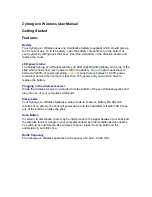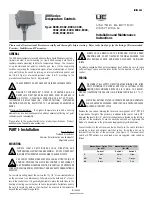
7-10
F35 MULTIPLE FEEDER PROTECTION SYSTEM – INSTRUCTION MANUAL
TARGETS
CHAPTER 7: COMMANDS AND TARGETS
7
•
How often the test is performed
: The self-test is activated when no message is received within the expected time
interval, which is the time-to-live time in the previous message. This time can be from milliseconds to minutes.
•
What to do
: Check GOOSE setup.
•
Latched target message
: Yes.
•
Description of problem
: The ambient temperature is greater than the maximum operating temperature (+80°C).
•
How often the test is performed
: Every hour.
•
What to do
: Remove the F35 from service and install in a location that meets operating temperature standards.
•
Latched target message
: Yes.
•
Description of problem
: Abnormal restart from modules being removed or inserted while the F35 is powered-up, when
there is an abnormal DC supply, or as a result of internal relay failure.
•
How often the test is performed
: Event driven.
•
What to do
: Contact the factory.
•
Latched target message
: Yes.
•
Description of problem
: A link loss detection on an Ethernet port. The link loss is due to unplugging the cable or the
switch port being down.
•
How often the test is performed
:
•
What to do
: Check the connection.
•
Latched target message
: Yes.
•
Description of problem
: The type of SFP does not match the CPU type. The SFP is a silver device that plugs into the rear
of the CPU module.
T-type CPU = All ports support fiber SFPs only
U-type CPU = Maintenance port needs RJ45 SFP and the other two ports fiber SFPs
V-type CPU = All ports support RJ45 SFPs only
The consequence of an incorrect SFP can range from damage to the F35 to no power information for the F35 on its
web page (enter IP address in a web browser, then click the
SFP Transceiver Information
. Only the type of SFP
displays and not power data).
•
What to do
: A web page "SFP Transceiver Information" is provided. This page displays the type of the SFP in it. This data
is to be used with the CPU type to know the cause of the problem.
TEMP MONITOR:
OVER TEMPERATURE
UNEXPECTED RESTART:
Press “RESET” key
FIRST ETHERNET FAIL
SECOND ETHERNET FAIL
THIRD ETHERNET FAIL
WRONG TRANSCEIVER
SFP MODULE x FAIL
















































